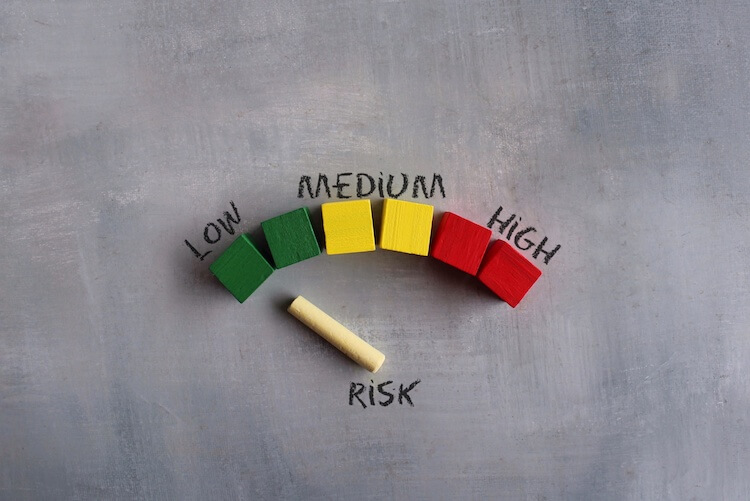
Sortino Ratio – Formula, Calculation, and Definition
- Jakob Brezigar
- Last updated: 13.June 2024
- Reading time: 6 min
Ever felt the thrill of a rollercoaster ride in your investment journey, hoping the dips are worth the highs? That’s where the Sortino ratio comes in handy. The Sortino ratio is a statistical tool used by investors to measure the performance of an investment relative to the downside risk. It helps differentiate between good and bad volatility by focusing only on the negative deviation from the mean—ensuring investors know just how bumpy their ride might be without overreacting to the fun parts.

Table of Contents
What is the Sortino Ratio?
The Sortino Ratio measures the risk-adjusted return of an investment asset, portfolio, or strategy. It differentiates between good volatility (upside volatility) and bad volatility (downside volatility). Specifically, it looks at the return relative to the downside deviation, which only considers negative returns.
How does the Sortino Ratio differ from the Sharpe Ratio?
While both the Sortino Ratio and Sharpe Ratio measure risk-adjusted performance, they treat volatility differently. The Sharpe Ratio considers both upside and downside volatility, while the Sortino Ratio focuses exclusively on downside volatility (or the risk of negative returns). This makes the Sortino Ratio a more specific tool for investors concerned about the downside risks.
How is the Sortino Ratio calculated?
The formula is: Sortino Ratio=(R−T)/DR
Where:
R = Expected return of the portfolio.
T = Target or desired return (often set to 0 or a risk-free rate).
DR = Downside Risk or the standard deviation of the negative asset returns.
Key Takeaways - Sortino Ratio:
- The Sortino Ratio, a variation of the Sharpe Ratio, stands as an instrumental metric in the finance arena aiding investors to meticulously measure the performance of investments relative to the downside risk entailed.
- This ratio is quintessential as it provides a lens through which investors can sift through good and bad volatility, thereby embarking on more enlightened investment decisions. The inception of this metric is credited to Frank A. Sortino.
- Incorporating the Sortino Ratio in investment analysis illuminates the path towards optimized risk-adjusted returns, offering a sturdy bridge between theoretical financial principles and practical investment choices.
What is the Difference Between Sortino Ratio vs. Sharpe Ratio?
Navigating through the financial landscape necessitates a keen understanding of the Sortino and Sharpe Ratios, both pivotal in evaluating risk-adjusted return. However, a distinctive line is drawn between the two, with the Sharpe Ratio encompassing total volatility, while the Sortino Ratio zeroes in only on the downside risk, which is detrimental to an investment.
This stark differentiation elevates the Sortino Ratio as it furnishes a more accurate depiction of investment risk by exclusively isolating harmful volatility.

The Sharpe Ratio, albeit useful, casts a wider net by enveloping both upside and downside risks, thereby often diluting the focus from adverse price movements which are of paramount concern to investors.
This pivotal distinction underscores the superiority of the Sortino Ratio in scenarios where only the downside risk is to be accounted for, making it a more precise tool in the risk-adjusted evaluations of an investment portfolio.
Understanding the Sortino Ratio
Diving deeper into the financial metrics, the Sortino Ratio emerges as a robust tool to scrutinize the downside risk associated with a potential investment.
Unlike other risk assessment tools that deploy the standard deviation metric, which encapsulates both upward and downward volatility, the Sortino Ratio conscientiously focusses on only the downside deviation, the crux of negative asset return.

This meticulous focus renders a clearer, more unobstructed view of the risks entailed, thereby being the metric of choice for investors with a cautious stance towards downside risks.
The Sortino Ratio calculation is perceived as a torchbearer in the realm of risk-adjusted performance metrics, bridging the chasm between theoretical risk assessment and real-world investment decision-making.
How to Calculate the Sortino Ratio
The roadmap to calculating the Sortino Ratio is embodied in the formula:
\[ \text{Sortino Ratio} = \frac{(R_p – r_f)}{\sigma_d} \]
where:
– \( R_p \) encapsulates the actual or expected portfolio return,
– \( r_f \) denotes the risk free rate,
– \( \sigma_d \) is symbolic of the standard deviation of the downside.

The crux of the Sortino Ratio formula lies in the meticulous subtraction of the risk free rate of return from the expected or actual return of the investment, which is then divided by the downside deviation.
This formula is the beacon of calculating the Sortino Ratio, elucidating the risk-adjusted returns by focussing solely on the downside deviation, unlike the total standard deviation utilized in other similar metrics.
Calculation Example
Illustrating with an example, assume Mutual Fund X boasts an annualized return of 12% and a downside deviation of 10%, whilst Mutual Fund Z holds an annualized return of 10% and a downside deviation of 7%. With a risk-free rate stationed at 2.5%, the Sortino Ratios for both funds emerge as:
\[ \text{Mutual Fund X Sortino} = \frac{(12\% – 2.5\%)}{10\%} = 0.95 \]
\[ \text{Mutual Fund Z Sortino} = \frac{(10\% – 2.5\%)}{7\%} = 1.07 \]

Despite the higher annual return of Mutual Fund X, the story told by the Sortino Ratio unveils Mutual Fund Z as the star, boasting a higher Sortino Ratio which signals a better return per unit of downside risk. This numerical exemplification underscores the potency of the Sortino Ratio in unveiling the better investment amidst a plethora of choices, by shining a spotlight on the risk-adjusted performance of the funds.
What is a Good Sortino Ratio Number?
In the quest for a good Sortino Ratio number, a range between 1 and 2 emerges as favorable, albeit some investors might accommodate a value slightly less than 1. A higher Sortino Ratio signifies a robust risk-adjusted performance, portraying a lucrative scenario where the investment is yielding more return per unit of downside risk embraced.
This numeric indicator serves as a compass for investors in the turbulent seas of investment choices, aiding in the identification of assets that have successfully tamed the downside risks.
When to Use the Sortino Ratio
Employing the Sortino Ratio becomes indispensable when investors are poised to assess the risk-adjusted return of their investments, with a particular lens on the downside risk. This metric comes to the fore especially when the negative returns are the focal point of analysis.
The Sortino Ratio doesn’t just stop at measuring, but it elucidates the essence of downside risk, casting a light on the path that investors need to tread to shield their portfolios from negative returns, thus becoming a financial beacon in turbulent market waters.
What is Risk-Free Rate
The concept of a risk-free rate is synonymous with the return on an investment devoid of risk, often symbolized by the yield on treasury bonds. It stands as
a benchmark, a yardstick against which other investments are meticulously compared, laying the groundwork for risk-adjusted returns analysis. This rate serves as the cornerstone in financial metrics like the Sortino Ratio, offering a baseline from which the excess returns of risky assets are gauged.

Analyzing the Risk-Adjusted Return of Strategies That Cap the Upside or Downside Risk and Volatility
Downside deviation is the quintessence of downside risk, showcasing the variability of returns that plunge below a specified target.
Unlike standard deviation that wraps around the total volatility, downside deviation meticulously sieves out the negative volatility from the total, rendering a more precise measure of potential loss. This precise deviation measurement is the lifeblood of the Sortino Ratio, furnishing a detailed spectacle of the downside risks entailed.
Summary
The Sortino Ratio emerges as a monumental metric for investors keen on deciphering the downside risk enshrouding their investments. By juxtaposing the Sortino and Sharpe Ratios, and judiciously employing the formula, investors can astutely gauge the efficiency of their investments in earning a return per unit of bad risk, thereby making more discerning investment decisions.
The Sortino Ratio thus stands as a financial lighthouse, steering investors safely through the tumultuous waters of investment choices.
Disclaimer: The information provided in this article is for informational purposes only and does not constitute financial, investment, or other professional advice. All opinions expressed herein are solely those of the author and do not represent the views or opinions of any entity with which the author may be associated. Investing in financial markets involves risk, including the potential loss of principal. Readers should perform their own research and consult with a licensed financial advisor before making any investment decisions. Past performance is not indicative of future results.

Jakob Brezigar
Jakob, an experienced specialist in the field of cryptocurrency market making, boasts an extensive international presence. With Orcabay, he has skillfully managed major operations and deals for a wide array of global stakeholders.



